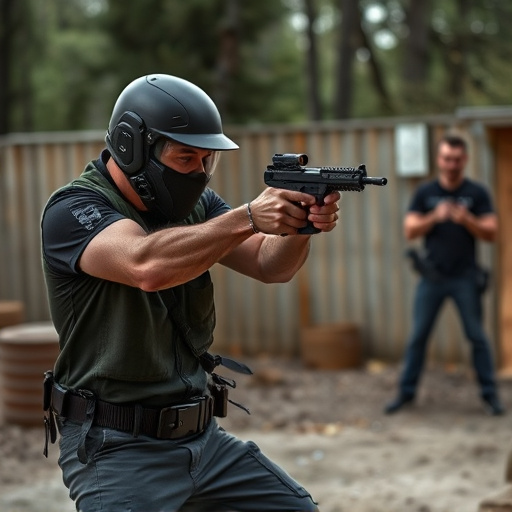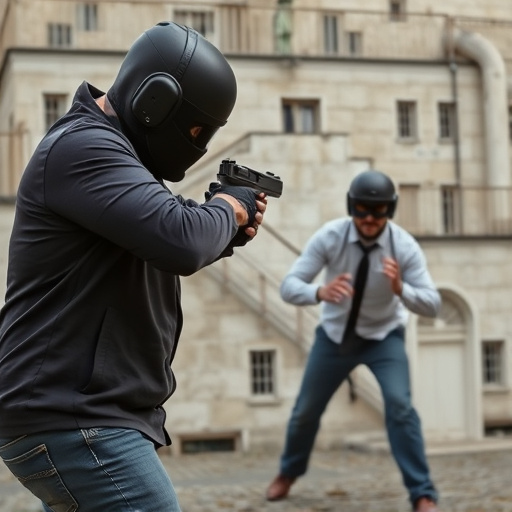Taser Paralysis Duration: Factors, Safety Measures, & Legal Implications for Retail Stun Guns
Retailers considering bulk stun gun purchases for store security must balance effectiveness with ris…….
Retailers considering bulk stun gun purchases for store security must balance effectiveness with risk assessment, as these devices incapacitate targets through electric shocks causing muscle paralysis. Variables like device model, distance, target's physical condition, and protective gear impact the duration of paralysis. Safety and tailored deployment are key; adjustable settings, staff training in de-escalation techniques, clear policies, and regular exercises minimize risks associated with bulk stun gun use in retail settings. Strict regulations and comprehensive training for law enforcement are crucial to prevent excessive force and protect individuals from potential harm caused by prolonged immobilization.
“In recent years, there’s been growing interest in bulk stun guns for retail stores as a means of enhancing security. However, understanding the potential paralysis duration from taser deployment is crucial for both retailers and law enforcement. This article delves into the immediate effects of taser use, exploring factors influencing paralysis duration and the safety measures necessary when considering bulk stun guns for retail stores. We also examine legal and ethical implications of prolonged paralyzing incidents.”
- Understanding Taser Deployment and Its Immediate Effects
- Factors Influencing the Duration of Paralysis
- Bulk Stun Guns for Retail Stores: Considerations and Safety Measures
- Legal and Ethical Implications of Prolonged Paralyzing Incidents
Understanding Taser Deployment and Its Immediate Effects

Tasers, or stun guns, are non-lethal weapons designed to incapacitate a target with an electric shock, typically causing muscle paralysis for a brief period. When deployed, these devices emit two small probes connected to wires, which make contact with the target’s skin and deliver a powerful electrical current. This immediate effect can result in temporary paralysis, allowing officers or users to gain control of a potentially aggressive individual. The duration of this paralysis is a crucial factor, as it determines the weapon’s effectiveness and potential risks.
In retail stores selling bulk stun guns, it’s essential to understand the deployment process and its consequences. The shock from a Taser can cause a person to fall to the ground, lose balance, and become immobile for several seconds. This paralysis is often described as a ‘stun’ or ‘flinch,’ during which the target’s muscles contract involuntarily. While the intended effect is to disable temporarily, excessive use or improper deployment may lead to longer-lasting muscle weakness or even respiratory distress. As such, proper training and awareness of Taser deployment protocols are vital to ensure both public safety and minimize potential harm.
Factors Influencing the Duration of Paralysis

The duration of paralysis caused by a Taser, or electronic control device (ECD), can vary significantly and is influenced by several factors. One key consideration is the model and type of stun gun used; advanced models with higher voltage outputs may result in longer periods of incapacitation. Additionally, the distance between the operator and the target plays a crucial role. Closer proximity generally leads to quicker recovery due to lower energy dissipation over time.
Another important factor is the physical condition and size of the individual being stunned. Larger individuals might experience shorter durations as their body mass can dissipate the electrical charge more quickly. Moreover, the presence of protective gear or clothing could also impact the intensity and duration of paralysis, acting as a barrier between the ECD and the target’s body. Understanding these variables is essential for retailers considering bulk stun guns for their stores, ensuring both effectiveness in self-defense scenarios and minimizing potential risks to individuals affected by these devices.
Bulk Stun Guns for Retail Stores: Considerations and Safety Measures

When considering bulk stun guns for retail stores, several key considerations come to the forefront. Primarily, the focus should be on safety and effectiveness. Retail environments can vary widely in terms of space, customer traffic, and potential threats. Therefore, selecting stun guns that offer a powerful yet controlled stun is paramount. Look for models with adjustable settings to tailor the stun intensity based on specific scenarios and compliance requirements.
Retail stores should also prioritize training among staff members on proper use and de-escalation techniques. This ensures not only the safety of customers but also reduces the risk of excessive force being applied. Additionally, implementing clear policies and procedures for weapon deployment, along with regular exercises, can significantly enhance preparedness and mitigate potential risks associated with bulk stun gun usage in retail settings.
Legal and Ethical Implications of Prolonged Paralyzing Incidents

The duration of paralysis caused by a taser deployment has significant legal and ethical implications, especially in scenarios where the effects extend beyond the immediate incident. Prolonged immobilization can lead to various physical and psychological consequences for individuals caught in such situations. In public spaces, particularly retail stores, the presence of bulk stun guns for retail stores raises concerns about potential overuse and the impact on bystanders, especially vulnerable populations like children or the elderly.
Ethical considerations surround the use of force, especially when it results in prolonged paralysis. Law enforcement agencies and private security firms must ensure that taser deployment is a last resort and that officers receive comprehensive training to manage such situations effectively. The length of paralysis can impact an individual’s rights and well-being, necessitating clear guidelines and oversight mechanisms to prevent excessive use, ensuring the safety and dignity of all parties involved.
The discussion highlights the multifaceted nature of taser deployment, from immediate effects to legal considerations. Understanding the factors influencing paralysis duration is crucial, especially with the growing availability of bulk stun guns in retail stores. While these devices offer enhanced security, it’s imperative to balance their use with safety measures and ethical guidelines. Prolonged paralyzing incidents necessitate a reevaluation of deployment strategies and training, ensuring public safety without causing undue harm.


